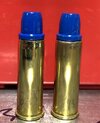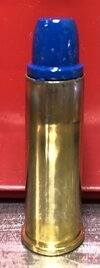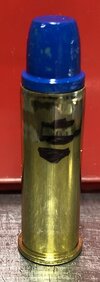Below is a pic of two dummy rounds that I made tonight. I’m setting up the xl650 to load 41mag so was setting up the dies. The dillon crimp seemed really strange to me, it didn’t turn in. I made another the same except used an rcbs crimp die.
RCBS typically uses a roll crimp for revolver cartridges. On the dillon sdb I get a roll crimp on 38spcl and 357mag that looks just fine.
This is my first revolver loading on the 650.
What do you think of the crimps, I gotta think the dillon is swaging down the driving band.

RCBS typically uses a roll crimp for revolver cartridges. On the dillon sdb I get a roll crimp on 38spcl and 357mag that looks just fine.
This is my first revolver loading on the 650.
What do you think of the crimps, I gotta think the dillon is swaging down the driving band.






